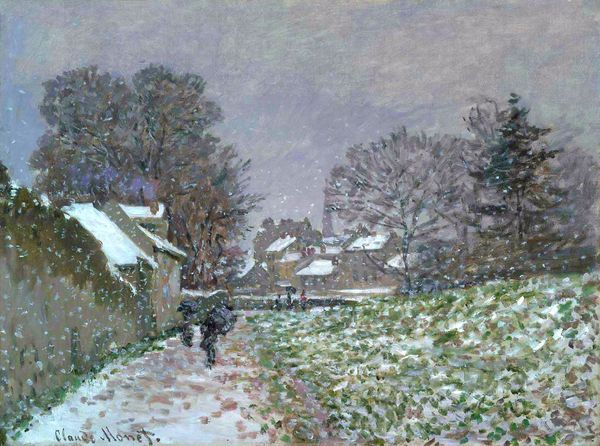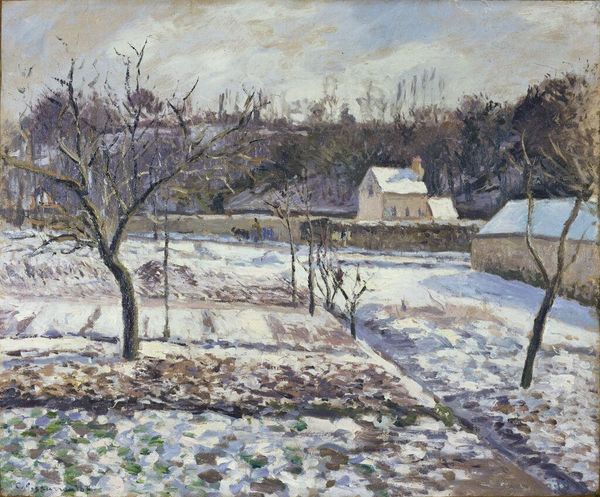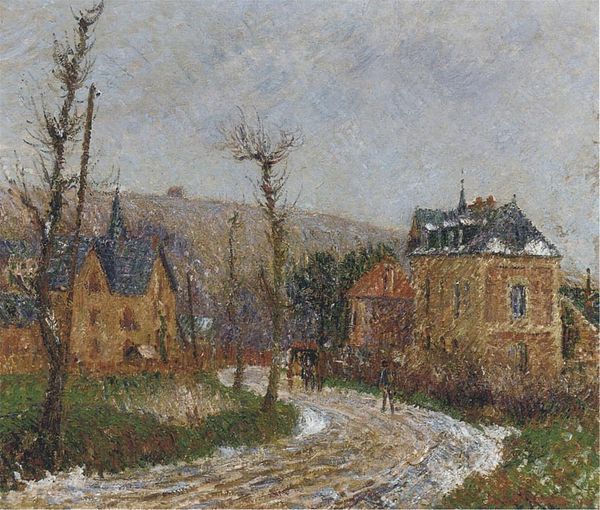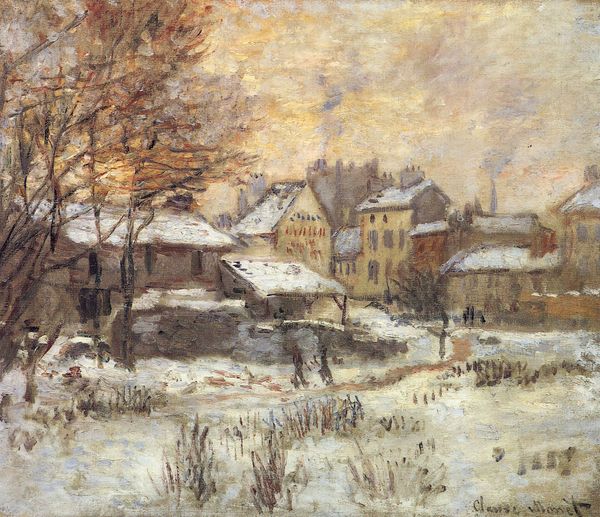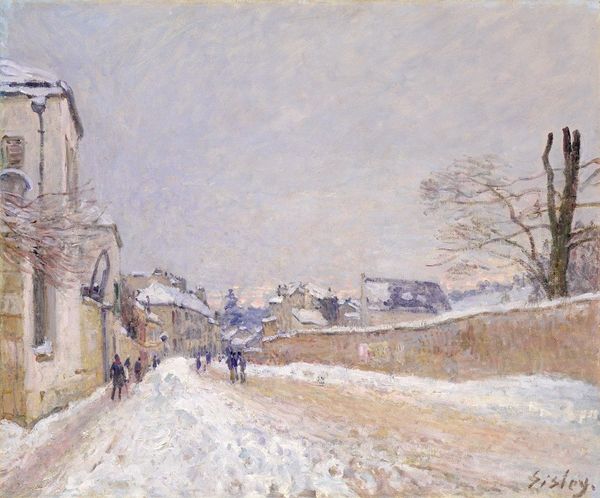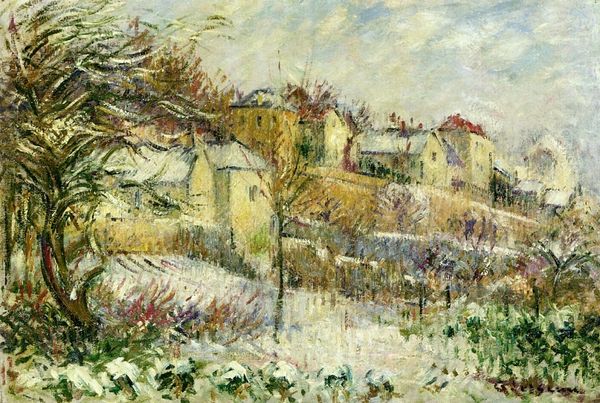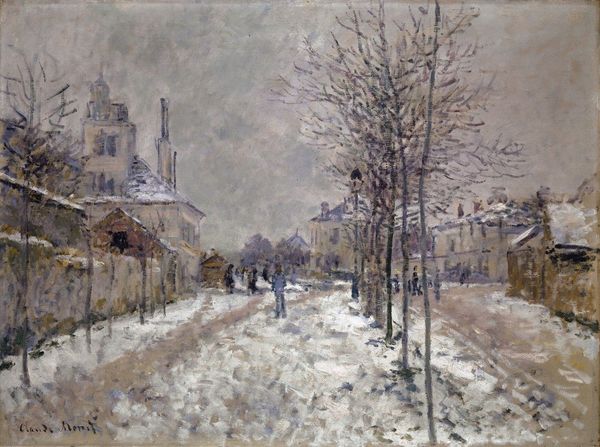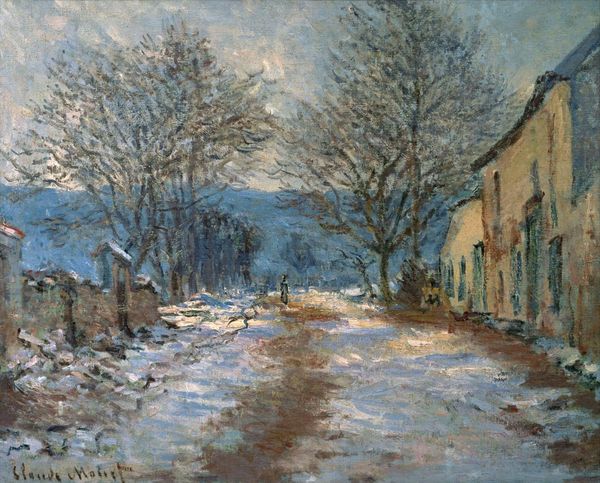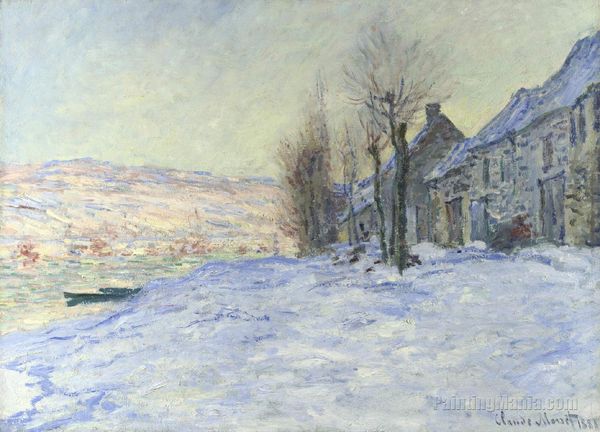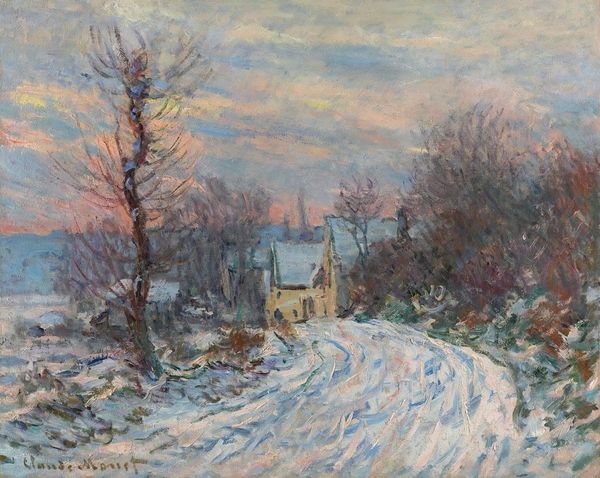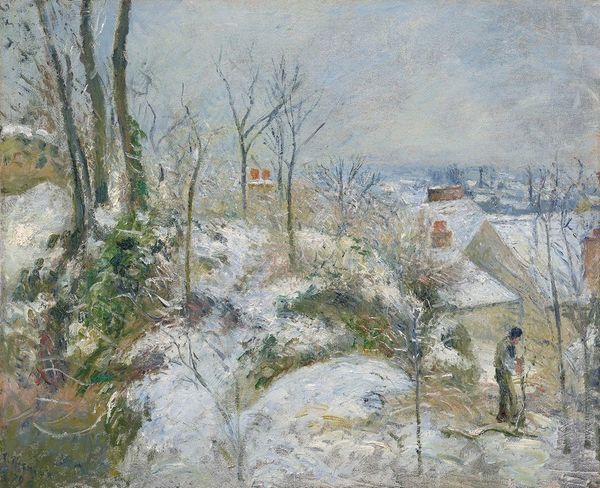
Copyright: Public domain
Editor: This painting is "Village in Snow" by Gustave Loiseau, made in 1911 using oil paints. I’m immediately struck by how muted the colors are, almost monochrome, and how that adds to the feeling of a quiet, cold winter day. What do you see in this piece? Curator: I see a study in contrasts. Notice the imposing, fortress-like wall and building dominating the immediate view. Consider what that says about permanence and structure juxtaposed with the snow, which is transient, transformative. It covers, changes, obscures, doesn’t it? Editor: Yes, it does give a sense of things being temporarily softened or hidden. Curator: Exactly! Look at how the buildings huddled behind the wall seem almost vulnerable, despite their solid construction. Snow, in art, has often symbolized cleansing or even death, blanketing the old to make way for the new. But the enduring structures imply a continued human presence, despite the seasonal harshness. Do you see a suggestion of resilience here? Editor: I do, especially how the rooftops are weighed down with snow, but still hold. Curator: And it’s an Impressionist painting. These artists broke away from traditional symbolism to depict what they truly saw, focusing on light and momentary effects. Perhaps Loiseau simply wanted to capture a fleeting moment, while unintentionally referencing those deeper, cultural associations? Editor: It's fascinating how much meaning can be layered even within a seemingly simple landscape. Curator: Indeed. This dance between direct observation and cultural memory is where the true power of an image often lies, revealing shared human experiences through the veil of artistic expression. Editor: This has definitely given me a lot to consider about Loiseau's choice of subject and style!
Comments
No comments
Be the first to comment and join the conversation on the ultimate creative platform.
